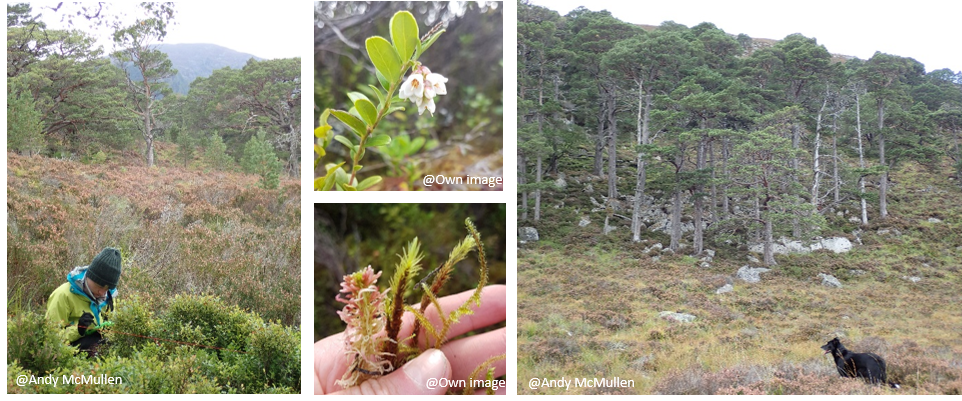Long-term surveys provide insights into how vegetation communities change over time. Back in 1971 a far-sighted survey was undertaken of Great Britain’s broadleaf and Scotland’s pine dominated woodlands. The ‘Bunce survey’, named after Professor Robert Bunce, was considered ground breaking in its methodological approach to surveying woodland soils, canopy and sub-canopy vegetation. It provided baseline data for tracking future woodland changes and fifty years later, resurveys are underway. Through my CASE partner, the ecological consultancy, Botanæco, I’ve joined the task force, starting with Ballochbuie pineforest in Aberdeenshire.
Whilst the broadleaf woodlands were resurveyed in the early 2000’s, this will be the first resurvey of the Scottish pinewoods. As a side note, there seems to be a theme of bumpy starts to the resurveys. The early 2000 resurveys faced outbreaks of the livestock disease, foot-and-mouth, which restricted countryside access across much of Britain and current resurveying (2020-2023) faces Covid-19.

Resurveys highlight some technological advances since the 1970’s. In the original survey, there were no digital cameras or GPS devices. Plot locations were recorded on 2 & 1/2-inch maps and finer scale plot relocation is based on descriptions of trees from 20 to 50 years ago. Think of trying to find a 200 m2 plot with a 35cm diameter Scots pine in its north-east corner, three birches in the south corner, and that’s one of the simplest plots! It makes for a lot of wandering around in circles, sometimes to discover there are some suspiciously ‘familiar’, decaying tree stumps…
Long-term monitoring highlights how woodland processes can operate on different time scales. For example, woodlands respond to long-term climate change and are dependent upon short-term changes associated with loss of a single, mature tree. Comparison of data from the 1970s and 2000s identified long-term declines in understory plant diversity due to changes in grazing regimes and shading from reduced canopy disturbance. Woodlands were also undergoing changes due to anthropogenic pollution and the introduction of clean air acts since the 1970’s. Conversely, a loss of canopy and enhanced sub-canopy plant diversity was seen in southern England as a consequence of the extreme storm event in 1987. Current resurveys will build upon this evidence base and also address relatively new woodland threats, such as the effect of Ash Dieback (a fungal disease affecting ash trees across much of Britain). The resurvey will also provide a pre-Brexit record of woodland conditions.
Despite being considered a ground-breaking, long-term survey, it is important to remember our human perspectives are only a snapshot view of woodland history. I think this really hits home when you consider that in some cases deadwood recorded in the 1970’s is still standing. Can you imagine how the landscape might have looked when it’s seedling first established? Or the even more ancient stories of the pollen grains residing in the peat below the roots of today’s trees…






















































